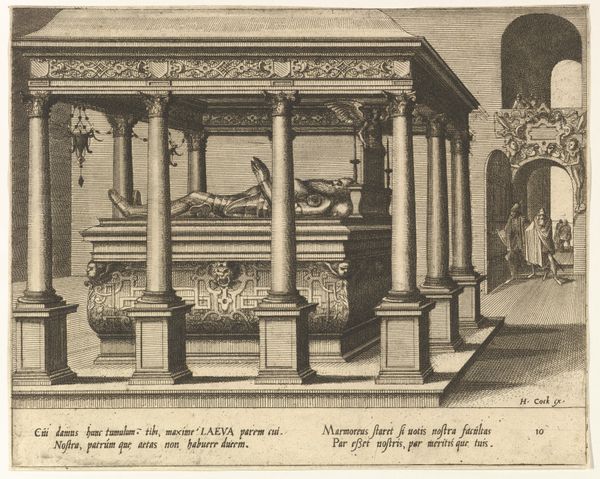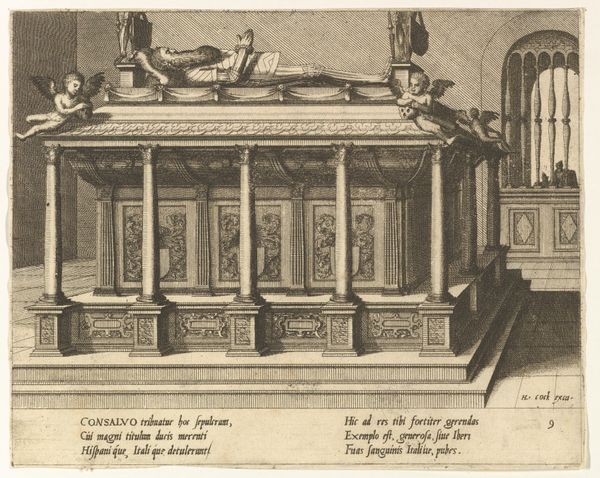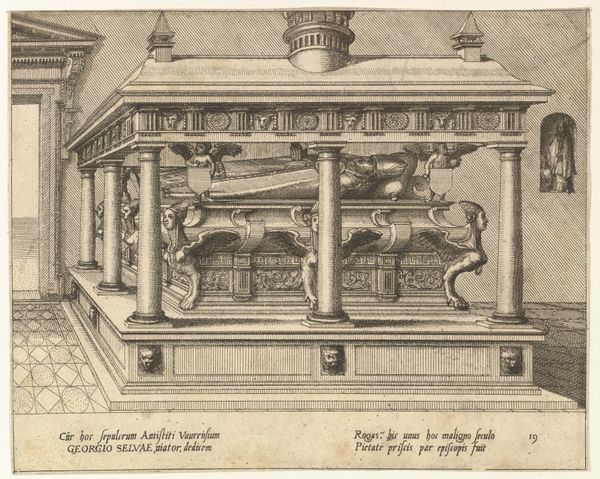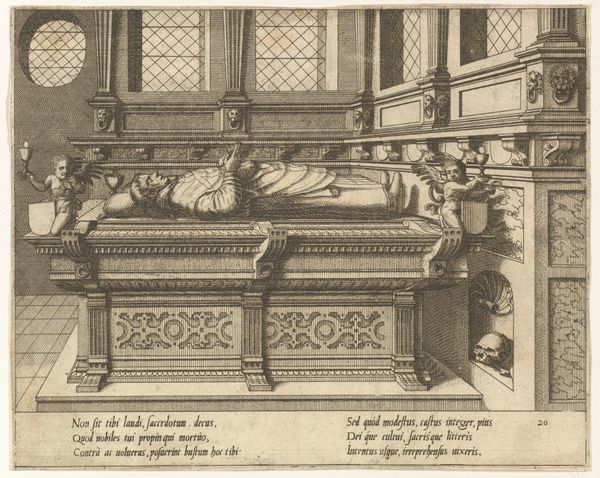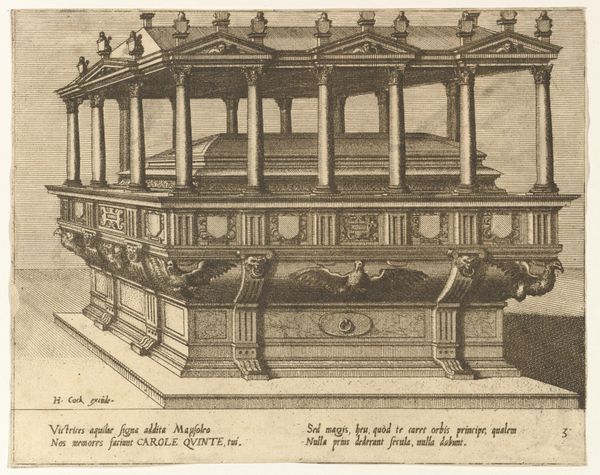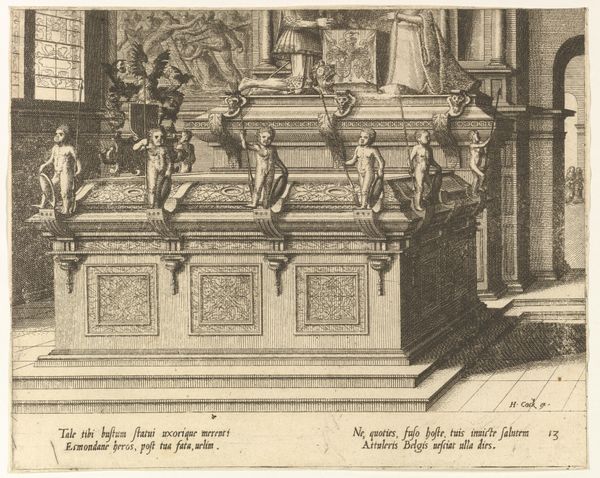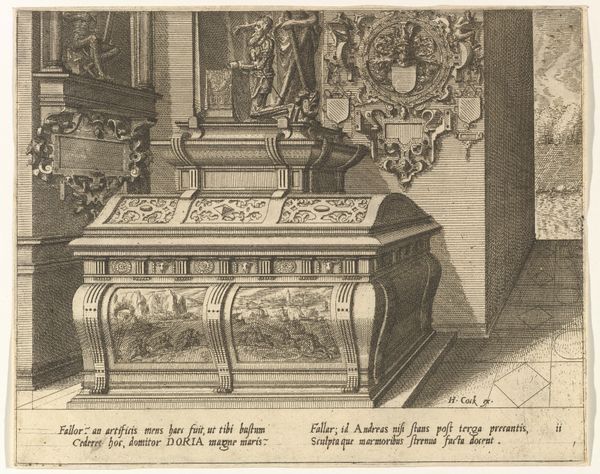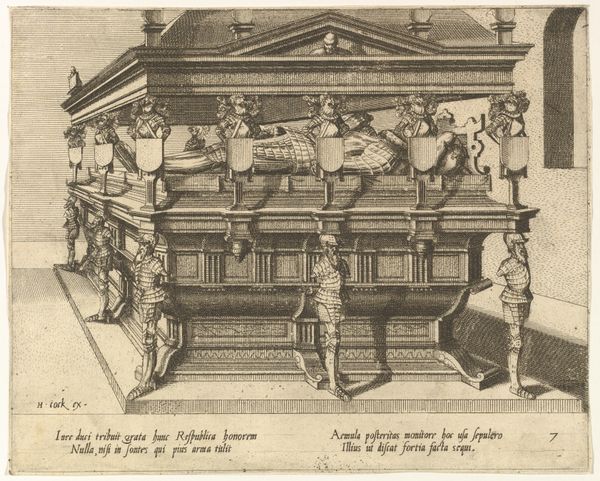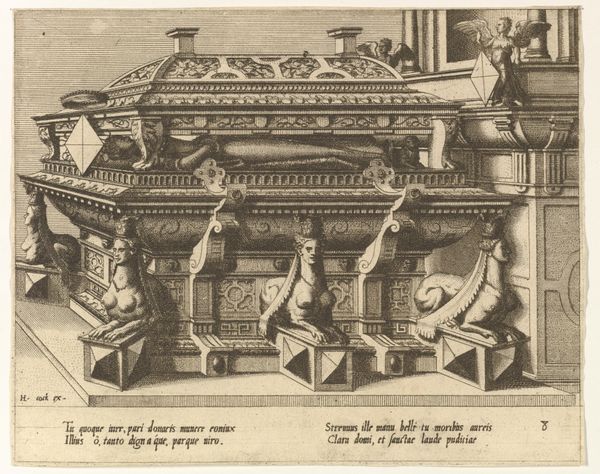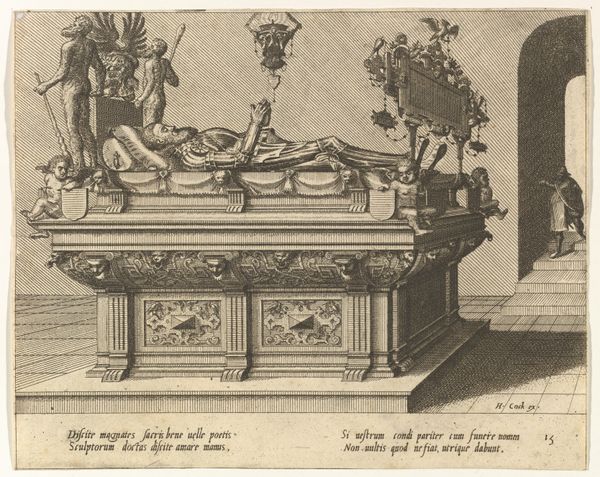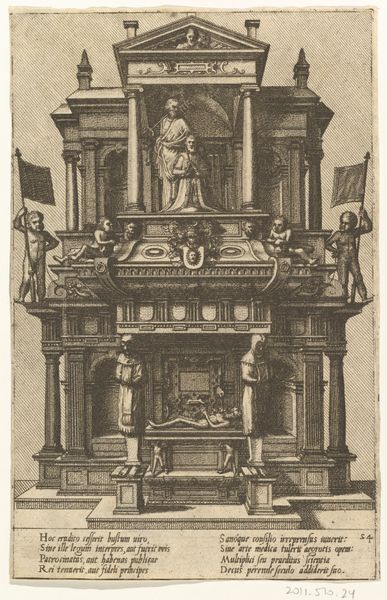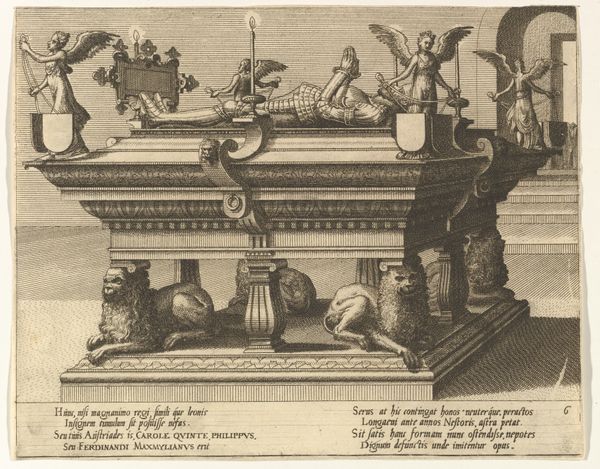
drawing, print, engraving, architecture
#
drawing
# print
#
figuration
#
11_renaissance
#
geometric
#
history-painting
#
northern-renaissance
#
engraving
#
architecture
Dimensions: sheet: 6 9/16 x 8 1/4 in. (16.7 x 21 cm)
Copyright: Public Domain
Curator: This is "Cœnotaphiorum (5)" by Hans Vredeman de Vries, created in 1563. It's an engraving, currently held at the Metropolitan Museum of Art. Editor: Well, immediately I get a sense of immense weightiness. It’s stark, it’s all lines and angles. The serried rows of dog-like figures – they almost feel imprisoned. It’s as if grief has solidified into architecture. Curator: Vredeman de Vries was deeply invested in architectural design and its theoretical underpinnings. He created many prints of idealized structures that reflected an increasing interest in perspective and geometry during the Renaissance, and they were critical sources of knowledge about proportion and ornament for craftsmen. Editor: Yes, the sheer meticulousness. You can almost feel the weight of the plate, the deliberate pressing of the burin to create these intense hatched lines. But is it beautiful? Ha! It is severe. I’m also finding a strange pleasure in the details within the panels—miniature dramas caught forever in the stone, so to speak. Curator: These cenotaphs—empty tombs—weren't about individual remembrance so much as statements about societal values and the structures of power that sustained them. This piece shows the cultural values attributed to mourning through the elaborate materials employed in this architecture. The engraving is significant as an accessible guide of sorts, translating the grandeur of elite memorials into a reproducible format. Editor: So, it’s a kind of a monument to monuments… and reproducible to make mourning widely available through the circulation of its aesthetic? Very meta! Still, all those stone canines, each rigidly posed...they are not mournful creatures, and I suppose this tension makes them that much more engaging, as the architectural ornament does not convey pathos that would resonate today. They’re guards, not grievers, so, material equals societal memorial. Curator: Precisely. De Vries, as a conduit, democratized access to styles of the elite. And looking at this piece, we understand better what this access does in real terms of knowledge and style transfer through the production of prints as a means of mass distribution. Editor: Yes. And I like pondering what De Vries must have thought of these imposing memorials he rendered into print. A touch of irony, perhaps, hidden in the precise, unflinching gaze. Or just simple admiration of form and craft. Curator: Yes, and so what begins as simply an image becomes something so much more - a layered account of material and artistic circulation in sixteenth century society.
Comments
No comments
Be the first to comment and join the conversation on the ultimate creative platform.
